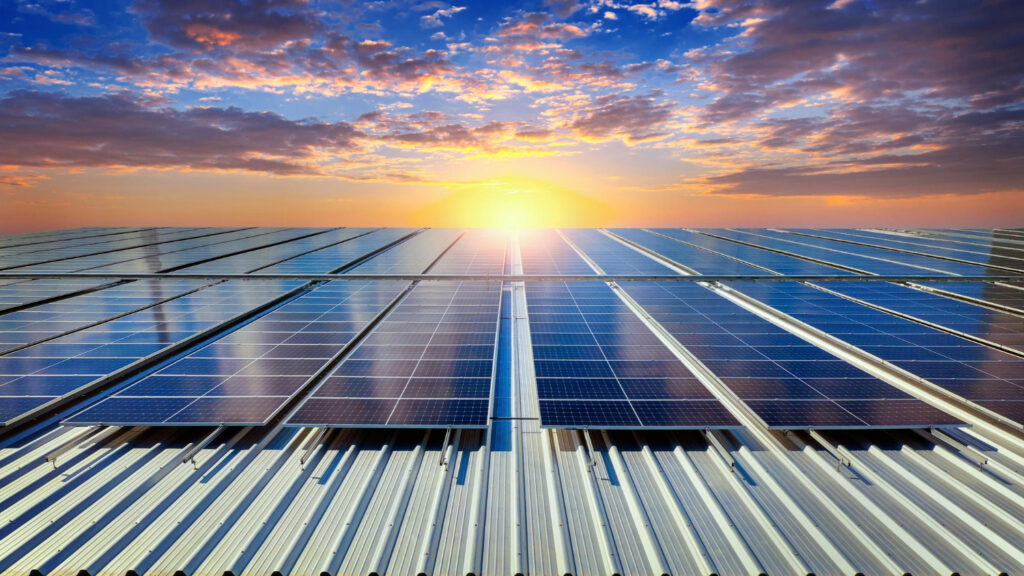
The fact that energy from the sun can be harnessed by solar panels installed on a roof or flat surface and converted into useable electricity is well-known. The rise in photovoltaic (pv) solar panels as an effective renewable energy source for domestic and commercial properties and projects is testament to that. So, how exactly does the solar cell technology work and what are some ways of improving solar panel efficiency to increase electricity generation from sunlight?
What does Photovoltaics mean?
Photovoltaics is a form of solar energy conversion that doesn’t rely on the use of fossil fuels. The term comes from the Greek word for light (‘phos’) and volt, which is linked to electricity. It is considered an exciting form of clean energy production that offers users low operating costs and effective electricity generation, thanks to the latest technological advances in photovoltaics.
Photovoltaics involves the direct conversion of light into electricity via semi-conductive materials. Light photons coming from the sun that have enough energy to penetrate the semiconductor in a photovoltaic cell can convert electrons in that cell to a higher state of energy. These electrons will then become free and behave like they are within a conducting material. When they are captured, this results in an electric current that can be converted into useable power. The greater the amount of light that gets absorbed into the semi-conductive material, the more electricity will be produced.
How do Solar Panels work?
Each individual pv cell will produce around one or two Watts – enough to power only very small devices, such as a watch or calculator. So, they must be combined to create larger solar panels or modules to create enough electricity for the system to work. Each of the solar panel components have been designed to support this process. Solar panels consist of multiple single solar energy cells, electrically connected to one another and weatherproofed to withstand changing temperatures and outdoor conditions. They are made from semi-conductive materials, such as silicon. A group of solar panels connected to each other is referred to as a photovoltaic array.
The type of electricity that produced when sunlight hits solar, or pv panels is direct current (DC). This cannot be used to power a property, so it must be converted into useable alternate current (AC) first. This is done by a solar inverter connected to the pv panel system for optimum energy conversion efficiency.
After the solar inverter, the newly converted AC flows through an electricity meter, which measures production and consumption. It also calculates the amount of electricity that has been sourced from the National Grid, and how much that has been generated by the solar panels and sold back. From there, the electricity moves to the fuse box, where it is fed into the property’s electricity system. It can then be used to power lighting, heating and other appliances in the home or business premises.
If the pv system has a solar energy battery attached, the electricity flows into it for storage either before or just after the solar inverter. The battery can only store DC electricity, as AC is a fluctuating energy source. So, the battery’s technology will convert any AC electricity back into DC for storage.
Factors Affecting Efficiency
There are many ways to ensure that your pv system is working as efficiently as possible. Have the panels facing the sun as much as possible, and at the most advantageous angle. Avoid installing them in a shady spot or somewhere where other buildings will impact on their contact with the sun. This will maximise the amount of solar energy they will be able to capture and convert into electricity. Likewise, keep the system clean, in good repair and free from debris that could obscure the surface. This will really help improve performance. Arranging an annual service can help keep the system on good working order and identify and fix any problems without delay.
Other factors include making sure that you have the most up-to-date solar panel systems that take advantage of the latest technological advances in photovoltaics. Technology moves at a rapid pace, so it is a good idea to keep up with innovations and upgrades as they are announced. Monitor your electricity output to ensure the amount is not dropping inexplicably and seek expert help if anything is amiss.